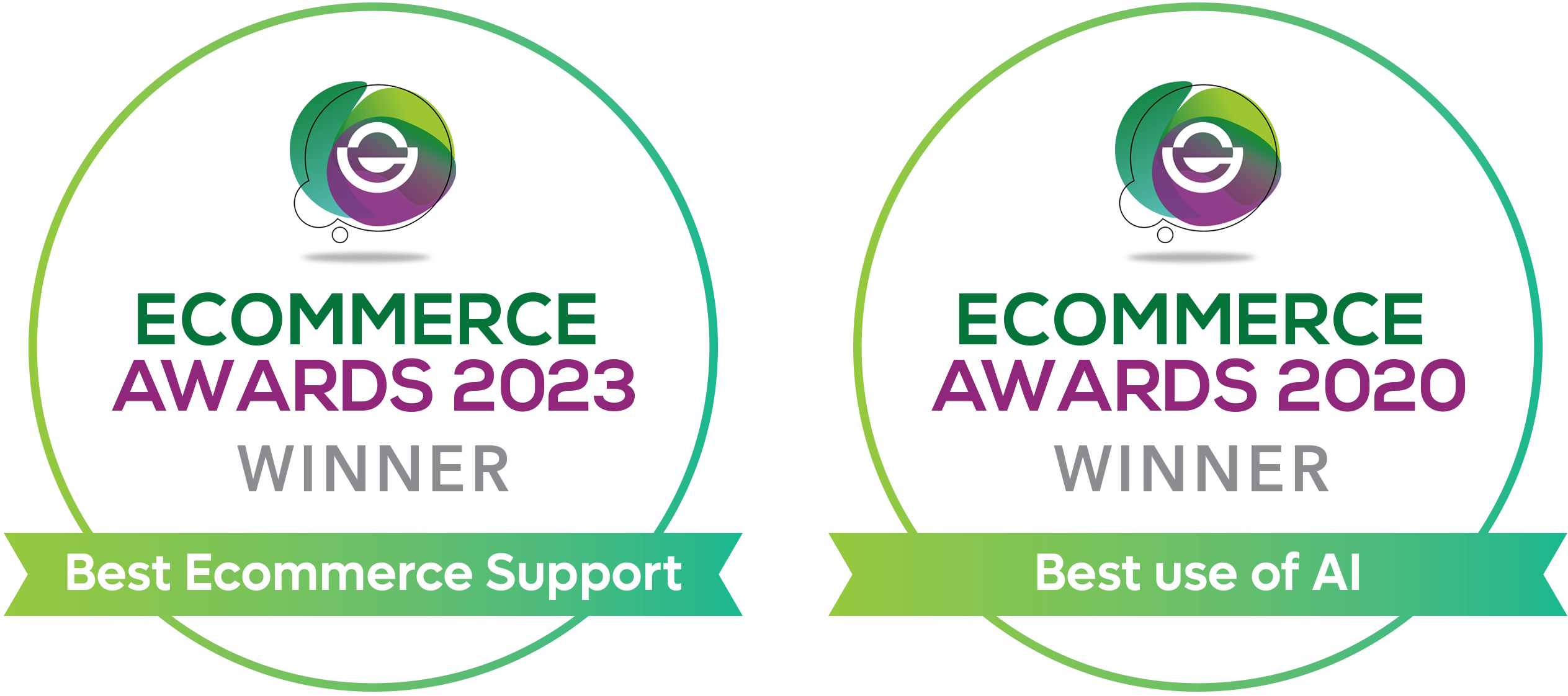Increase customer lifetime value with predictive analytics
Customer Lifetime Value (CLV) provides your company with an estimate how much profit you will get from a customer over an extended period of your relationship. CLV is quite simple to understand and calculate at a high level; many companies produce estimates of their CLV for financial and marketing analysis. However, the bigger underlying question with CLV is how to create customer loyalty and motivate your customers for repeated purchases to reach a high customer retention rate. This is a much harder question to answer.
Predictive data analytics methods can be used for understanding how to drive repeat purchases and gain a competitive advantage through building long term customer loyalty. As companies grow larger it becomes increasingly important to focus relatively more resources on building customer retention than on pure customer acquisition, in order to maximise total long term ROI from marketing and CRM investments. It is easier to sell to an existing customer than a new one, and repeat custom should take an increasing share of revenues as the company grows. In other words a high customer retention rate naturally drives higher Customer Lifetime Value. So what lies behind the Customer Lifetime Value concept and how can it be combined with predictive analytics for increased long term profitability?
Customer Lifetime Value meaning
Customer Lifetime Value is a methodology for estimating how much profit you can expect to get from a customer over the lifetime of your relationship. This knowledge will also allow you to map out where, when and how much to invest in your marketing to retain the customers you are most interested in in terms of valuable and profitable relationships. There are several different ways to calculate it at an aggregate level and you can find plenty of examples online – notably several articles by Harvard Business Review. The basic formulation is –
CLV = Gross margin of purchases over time x Retention Rate – Marketing Costs
Where we estimate CLV at Metageni, we tend to start by defining 4 key types of customer:
- New customers – who are buying for the first time.
- Retained customers – who are making regular purchases.
- Lost customers – your churn – who have not bought from you in a while.
- Win-back customers – customers who eventually come back to you after being lost.
Just quantifying each of these, and understanding how they change over time, is hugely insightful for understanding the role of customer loyalty and repeat purchase. It also forces you to answer important questions like, ‘what is a typical time frame between purchases?’ and, ‘how many orders do my loyal customers make in any given period?’
Adding CLV allows precise answers to questions about the relative value of retained vs new customers. It makes sense to evaluate how CLV and customer types vary between your customer segments defined by purchase category, time of original acquisition and demographic. For each customer group an idea of long term value through CLV helps define how much emphasis should be placed on trying to increase their engagement.
Using data analytics to increase repeat purchases
Customer data analysis using predictive models allows businesses to understand which particular attributes of the customer are generating repeating purchases and help to diagnose why. Ideally this would be part of a complete, actionable strategy built on a variety of data sources such as transactions, CRM and analytics data. Machine learning based retention models are a fantastic technique for pinpointing how to increase customer retention and customer lifetime value on a customer by customer basis. Customer retention analysis outlined by a machine learning (AI) model, can help you to predict which customers are more likely to complete repeat purchases, which in return allows you to manage your marketing resources accordingly for increased sales and ROI.
Moreover, cohort analysis can segment your customers and combined with predictive models, help you to tease out the key characteristics of customers with higher customer value. This analysis will not only help you to understand which marketing channels and methods you should use to retain high value customers, but also which particular actions to focus on to encourage loyalty. For example, it could help you to figure out if a follow up communication or a promotional offer really helped move customers to the end of the sales funnel for a repeat purchase, or whether the effort was wasted with more value to be found elsewhere.
Another major advantage of using predictive models for understanding customer retention as a driver for CLV is the opportunity for in-depth analysis to highlight your main retention drivers, which might include customer and product features, marketing activities, website usability, call center interactions and many more. This approach yields the strongest insights when applied to a wide range of customer cohorts characterised by multiple dimensions, including category and brand interest, customer loyalty and purchase frequency, customer demographics, historic customer buying patterns and behaviour, time since last purchase and other factors which are an interest to marketers reflecting specific business and industry requirements.
As a following step, the model is built to support retention growth by simulating how various retention drivers drive loyalty and repeat purchase. A data-driven strategy based on a truly predictive approach can greatly increase customer lifetime value and ROI.
Lastly, the next best action method, which is discussed in greater detail in this article on our blog Predicting Online Customer Intent – Metageni, can help you to understand which action was the best strategic move for encouraging a repeat purchase. Machine learning algorithms are used to precisely identify how to increase customer lifetime value, as well as improving the accuracy of your customer lifetime value calculation. Was it the follow up email? Or perhaps, a personalised offer? Next best action simulates every possible action and combines this with the cost of the action, to pick the one single action that yields the best result for ROI. With CLV analysis, you can focus on the long term ROI as your next best action. Ultimately your customer and purchase data has the potential to do all this if analysed well: predict which customers are more likely to repeat their purchases, what that would be worth to your business and then identify what exact marketing tactics or actions you should implement to make it happen.
Predictive analytics within your business growth strategy
When the companies know the exact needs and wants of their customers it is easier to predict the customer intent and plan customer retention strategies. The best way to do this, is to collect first party data about your customers which can then be used for building machine learning models and devising the strategy for high customer retention rate. Once you have collected all the necessary data about your customers, an in-depth analysis conducted by a data science specialist will predict the customer intent and prodive the recommendations for increasing your customers’ lifetime customer value. The ultimate goal is to create data driven personalized experiences for your customers which is unarguably one of the main keys for unlocking retention rate and leading to high
In conclusion, the main pillars for a successful customer lifetime value growth strategy are communication, personalization and re-engagement. These three pillars of success are difficult to achieve without knowing the needs and wants of your customers. Thus, the data driven approach which is based on your customer data, rather than the generalised information collected from third parties, is a highly effective approach for building strong relationships with more loyal customers.
What is your measurement strategy?
Considering the digital transformation in the past 20-30 years combined with the post-pandemic challenges, it has never been more important for businesses to adopt a data-driven approach and embrace the challenges of marketing measurement.
Successful companies and forward-thinking leaders have focused their attention on data analytics, understanding the value of knowing more about their customer’s preferences and what they do during the conversion journey in order to increase marketing ROI, using this insight to make informed strategic decisions.
Can we measure marketing effectiveness for customers who are influenced and buy both online and offline?
With the right capabilities, knowledge, and data-driven approach, the answer to this question is an emphatic yes. In the following, we are going to briefly review some of the approaches companies can adopt in their measurement process, and try to explore the pros and cons of each, without getting overly scientific.
Get in touch with us for expert advice!
Thanks for reading – we hope you learned something through this high-level tour of marketing effectiveness methods. If you want to learn more about expert data analytics using AI, or are interested in how Metageni can help you use your data to grow online, then do get in touch with us: hello@metageni.com
Gabriel Hughes PhD
Does this article resonate with you? Check out other posts to the right of this page.
Can we help unlock the value of your analytics and marketing data?
Metageni is a London UK based marketing analytics and optimisation company offering support for developing in-house capabilities.
Please email us at hello@metageni.com















